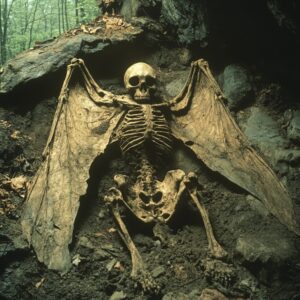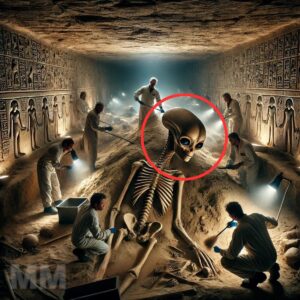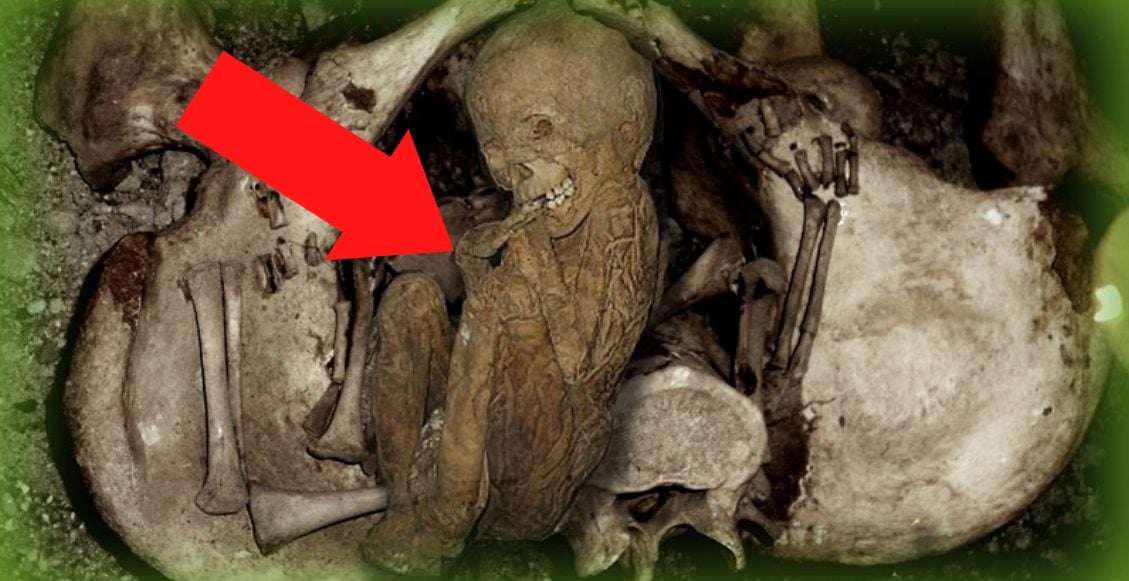
In 1551, the Spanish Inquisition was in full swing. Mandated by the Spanish crown, those deemed heretical to Catholic orthodoxy (Jews, Muslims, and many others) were subjected to forced conversion, torture, and even death. According to the Transactions of the Obstetrical Society of London, one such victim was hanged to death under the hot Spanish sun, her body left twisting in the winds blowing in from North Africa. Four hours later, it was discovered she had been pregnant when two living children fell from her womb.
A child’s skeleton inside another skeleton.
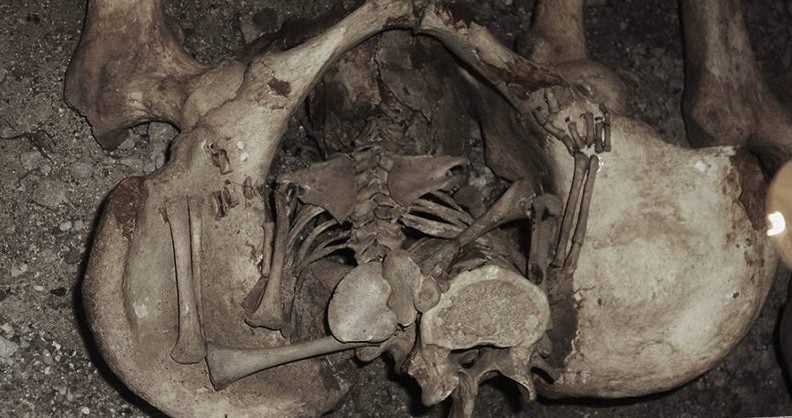
Fast forward nearly a century later, and a woman named Emme Toplace was interred quickly while her husband was away. When the bereaved visited her grave, he allegedly heard a child’s cry and ordered her disinterred. When her coffin was opened, it was discovered that she had given birth to a baby boy.
He lived and was named Fils de la Terre, which means “Son of the Earth.” Emme’s parish register entry reads: “April ye 20, 1650, was buried Emme, the wife of Thomas Toplace, who was found delivered of a child after she had lain two hours in the grave.”
Scientists believe this woman ‘gave birth’ after she died.
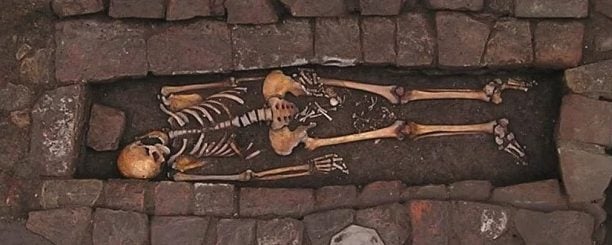
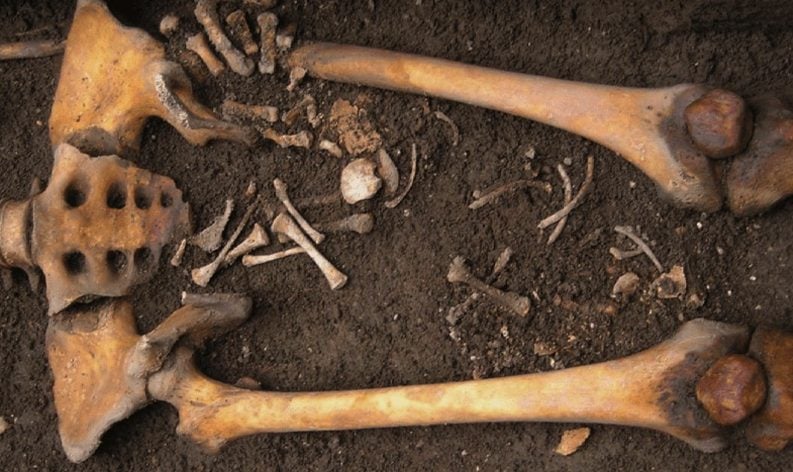
While always highly unusual, coffin births are even rarer in the modern world due to improved medical practices and greater medical intervention after death, coffin births do not occur often.
They do, however, still happen in today’s world.
A woman in her 30s was found dead from an apparent overdose of heroin, to which she was addicted. Severely decomposed, the fetus was found partially emerged from the mother’s body, presumably a case of real-life coffin birth. Sadly, as most often happens, the fetus and mother were both found dead.
As rare and morbid as coffin births are, they are a stark representation of the thin line between life and death.

